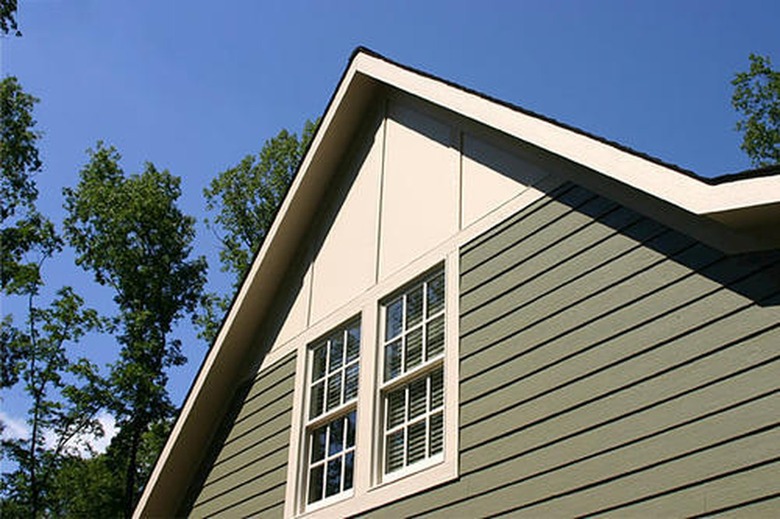How To Paint LP SmartSide Siding
We may receive a commission on purchases made from links.
LP SmartSide siding is a composite material made from a combination of wood fibers and synthetic resins and imprinted with a texture to make it look like wood. Just as composite decking can outlast wood, SmartSide siding can outlast wood siding if it gets the proper care, including a fresh coat of paint after installation.
To properly protect the siding, you need the right kind of paint and the right application method. The siding comes in three formats: lap, shingle, and panels with vertical grooves. None of these lends itself well to painting by roller, so the two remaining options are brush and spray, and spray is recommended.
Painting to Preserve the Warranty
Painting to Preserve the Warranty
Because SmartSide siding comes preprimed, you generally don't have to worry about priming again, but there's one exception. Whenever you cut a plank, you need to prime the end grain. LP's installation instructions specify that all exposed edges must be painted, so failure to do this could void the warranty. You should not, however, paint or prime the back of the siding because the composite material needs to breathe.
The type of paint recommended by the manufacturer is an acrylic latex coating designed specifically for exterior use. The company recommends using paint specifically designed for composites, but if you can't find a suitable product, any exterior latex paint will work. When priming edges, use a water- or oil-based stain-blocking primer.
Prepping the Siding for Painting
Prepping the Siding for Painting
Little preparation is required if you're painting brand-new siding that you just installed, and because it's already primed, you can skip directly to the color coat (although you may need to touch up exposed cut edges). If you're repainting old siding, it's important to remove dirt and mold to ensure the new paint will adhere, and a pressure washer offers the fastest and easiest way to do this.
A washing pressure between 2,000 and 2,500 psi is ideal, and you should use a tip with a 15- or 25-degree spray pattern (yellow or green). Keep the tip at least 6 inches away from the siding to avoid gouges, and when washing lap siding, avoid pointing the nozzle upward toward the bottom of the lap joints. Keep the nozzle pointed straight at the siding or slightly downward to prevent water from getting behind the siding.
The Best Way to Paint Siding
The Best Way to Paint Siding
If you're painting a small structure, such as a shed, you may prefer to use a paintbrush, and if so, make it a 3- or 4-inch brush with synthetic bristles. The best way to paint a larger structure, however, is to use an airless paint sprayer, and if this is the method you choose, you need to protect the surroundings from overspray. Mask off trim, windows, and doors with masking tape and paper and cover surrounding shrubbery, walkways, and garden furniture with drop cloths, preferably canvas ones because they won't blow around in the wind.
Choose a dry, partly cloudy day with no rain in the forecast and temperatures between 40 and 85 degrees Fahrenheit. If you spray when it's too cold, the paint will dry slowly and may drip, whereas it will dry too quickly and possibly crack if you spray when it's too hot and sunny. Spray an even coat on one side of the building and then go back and spray a second coat before you move the ladders and drop cloths to another side and continue painting.
